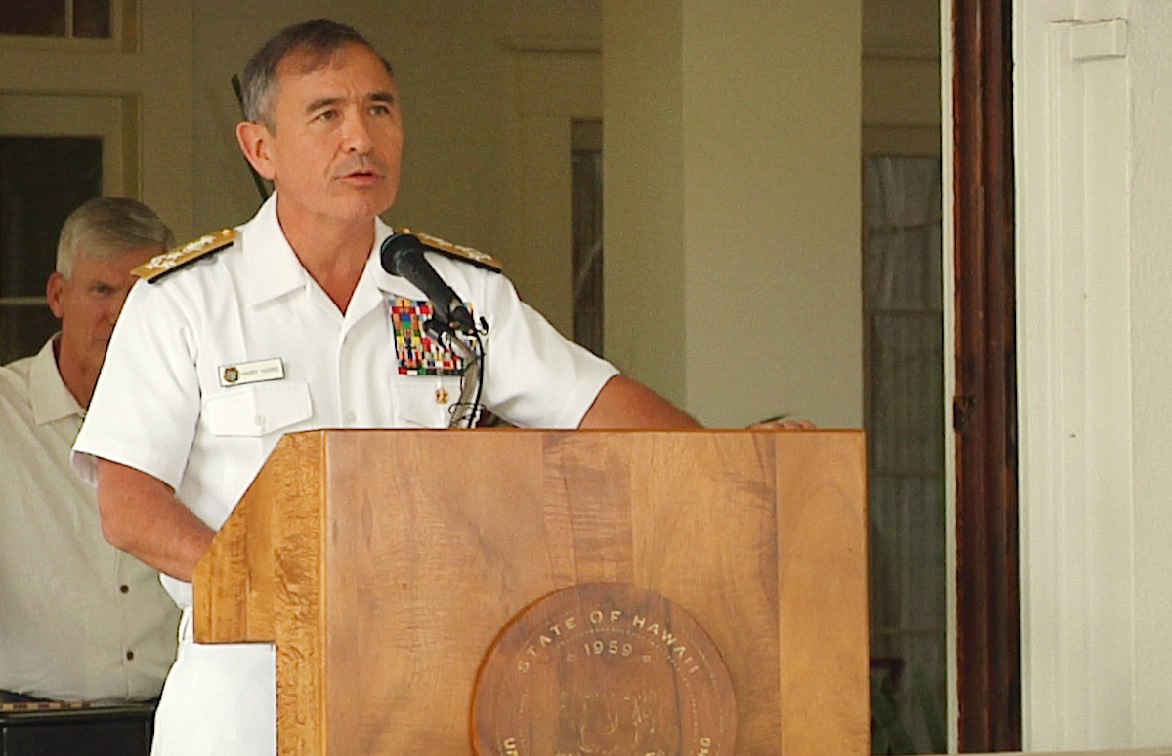By Air Force Staff Sgt. Christopher Hubenthal Defense Media
Activity - Hawaii
HONOLULU, January 16, 2016 — Speaking to local government
officials, private sector representatives and military leaders, the commander
of U.S. Pacific Command emphasized Hawaii’s importance in the future of the
Indo-Asia-Pacific theater during an annual meeting for the local Military
Affairs Council, Jan. 15.
Navy Adm. Harry B. Harris recognized the council and state
leaders for their support in communicating how joint military forces in Hawaii
support the national security strategy and ongoing Pacific rebalance
initiative.
Harris said there is no doubt that the United States
economic future is firmly tied to the Indo-Asia-Pacific, and that everyone must
work together to strengthen civil and military relationships and with other
nations in the region.
“Due to the outstanding communications conducted by Governor
Ige, Mayor Caldwell, Senators Schatz and Hirono, Representatives Gabbard and
Takai, and all of our local-state officials, decision makers in Washington and
throughout the region are well aware that Hawaii remains the gateway to America’s
rebalance to the Indo-Asia-Pacific,” Harris said.
Harris said the state’s role in supporting the rebalance --
Hawaii is the only place where all U.S. component commanders are geographically
co-located -- allows forces to train and operate jointly and benefit from a
face-to-face relationship, an advantage made largely possible because of the
support from the state.
“This gives us an extraordinary advantage and it wouldn’t be
possible without the continued dedication and support from Hawaii’s community,
civic, and industry leadership,” Harris said. “In addition to our forces in
Hawaii, the presence and capabilities we are bringing forward into this theater
are commensurate with the challenges that we face.”
Defense Agreement
Harris sighted an example of strengthening security ties
between the Philippines and the United States through an enhanced defense
cooperation agreement.
“The agreement will facilitate the enhanced rotational
presence of the U.S. military in the region, and support the long-term
modernization of the armed forces of the Philippines,” Harris said. “This will
enable the United States and the Philippines to continue supporting the
international rules-based order that has served the region so well.”
Harris also emphasized that security and stability -- which
the region has enjoyed -- can’t be taken for granted. Hawaii’s role to the
rebalance will continue to support Pacom's commitment to the security and
safety of the nation’s allies as possible threats in the region emerge.
“Security challenges such as North Korea threaten to
destabilize the region and reverse the trends of transparency and prosperity
that we’ve all enjoyed,” Harris said. “America is rebalancing to the
Indo-Asia-Pacific to meet those challenges and reinforce the international
rules-based order that has benefited the region for more than 70 years and
Hawaii plays a critical role.”











